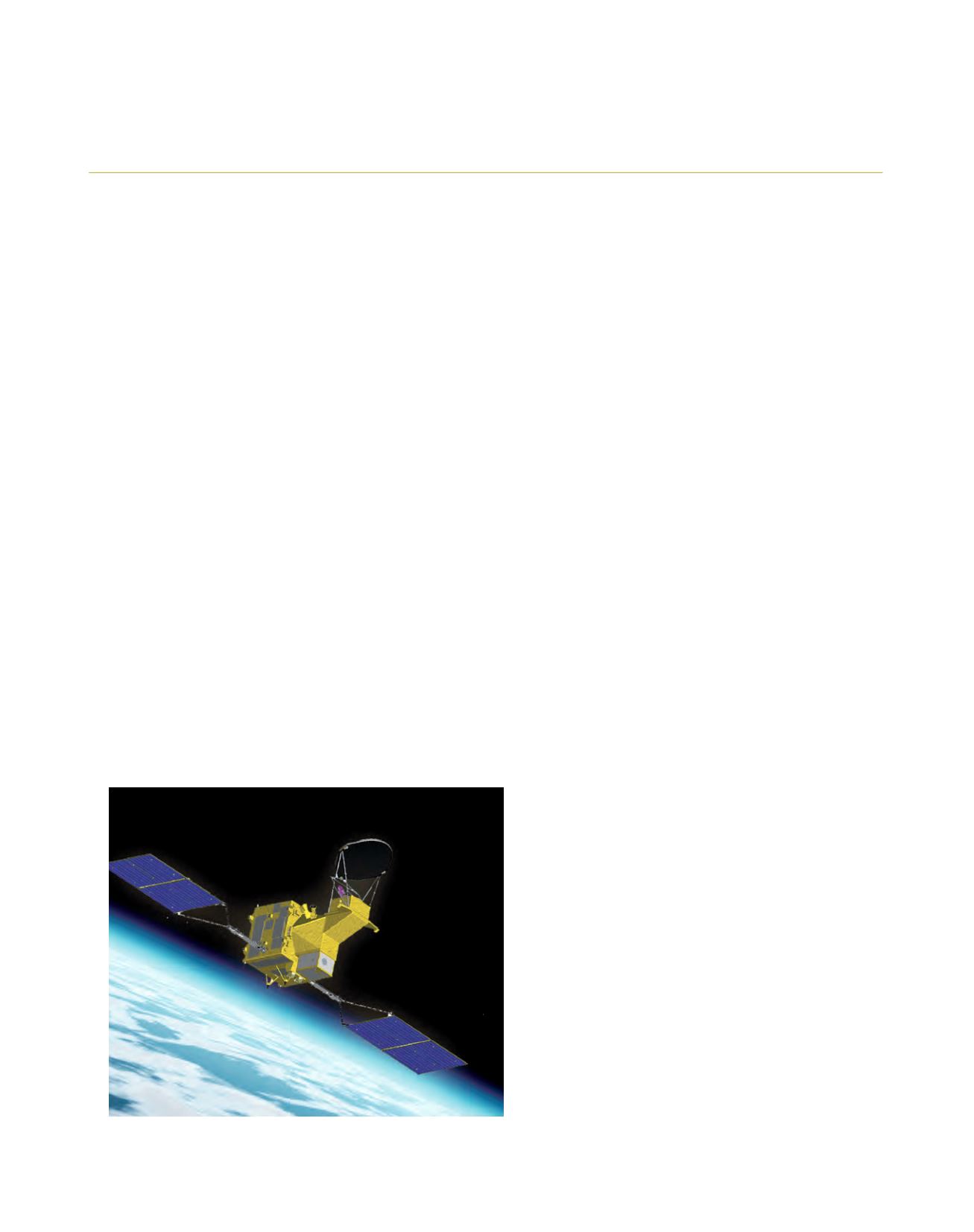

[
] 126
Long-term observations of global climate change
Kazuo Umezawa, Keiji Imaoka, Kazuhiro Tanaka, Yoshihiko Okamura, Japan Aerospace Exploration Agency
G
lobal warming has developed into a problem which if
ignored will see significant and detrimental changes to
the global environment. The fourth assessment report of
the Intergovernmental Panel on Climate Change states unequiv-
ocally that the climate is becoming warmer, citing observed
increases in global average air and ocean temperatures, as well
as widespread melting of snow and ice.
Observing climate change has its complexities. While some
symptoms of global warming are explicit the majority are more
discreet. In addition, such signals are affected by natural variabil-
ity and thus do not appear in a uniformed guise worldwide. As
such, any observational system for climate variability should be
thoroughly consistent, of an extensive duration and have global
coverage.
Japan Aerospace Exploration Agency (JAXA) is developing
the Global Change Observation Mission (GCOM) in response to
these requirements. GCOM will involve two medium-sized, polar
orbiting satellite series. The series will stretch over multiple genera-
tions, with one-year overlaps between consecutive generations for
inter-calibration. Two instruments were selected to cover the wide
range of geophysical parameters required: the Advanced Microwave
Scanning Radiometer-2 (AMSR2) for GCOM-W and the Second-
Generation Global Imager (SGLI) for GCOM-C. AMSR2 will cover
observations relating to the global water and energy cycle, while
SGLI will cover the surface and atmospheric measurements related
to the carbon cycle and radiation budget.
GCOM-W
GCOM-W will focus on long-term observations related
to global water and energy circulation, including the
monitoring of polar areas. To achieve the desired
results multichannel microwave radiometers will be
used, which are capable of capturing quantitative data
with the required frequency and at a global scale. More
specifically, the radiometers will be used to gather
quantitative measurements of given surface parameters
through non-precipitating and – in some cases – light
precipitating clouds. In addition, they will capture
vertically integrated layer information via the interac-
tion of microwave radiation with intercepting media,
such as rain drops or snow grain.
Leveraging the capabilities of AMSR2, GCOM-W will
observe various changes in the cryosphere including
variability in: sea ice, ice sheets and snow cover. Such
measurements are considered an excellent indication
of the potential extent and timing of global warming.
Changes in sea surface temperature, precipitation,
cloud water and water vapour will also be monitored in
association with air-sea interactions, such as the El Niño-
Southern Oscillation. Finally, surface soil moisture will be
observed to help quantitatively determine the water and
energy balance between the land and atmosphere.
The first generation GCOM-W (GCOM-W1) satel-
lite will be a medium-sized platform, smaller than the
ADEOS and ADEOS-II satellites. This is to reduce the
risk associated with large platforms that feature multi-
ple, valuable observing instruments. Also, since the
ADEOS-II problem was related to the solar paddle,
recent Japanese satellites almost always have dual solar
paddles. One concern relating to the dual-paddle design
was a possible influence on the Cold Sky Mirror (CSM)
field of view, introducing cosmic background tempera-
tures to the feed horns. We have assessed the direct
effects solar paddles have on the CSM by simulating
observed brightness temperatures and it was confirmed
that the direct effect was negligible. To avoid the
shading of the solar paddles by large AMSR2 antennas
and the effect to CSM mentioned above, the paddles
were designed to have longer booms. The local time of
the ascending node will be 13.30 to remain consistent
with the Aqua/AMSR-E observations.
The system Preliminary Design Review of the
GCOM-W1 satellite was completed in March 2008 and
the AMSR2 system critical design review (CDR) was
finished in November 2008. In designing the instru-
ments and interface for the spacecraft, the main goal
O
bserving
, P
redicting
and
P
rojecting
C
limate
C
onditions
Overview of the GCOM-W1 satellite
Image: JAXA
















